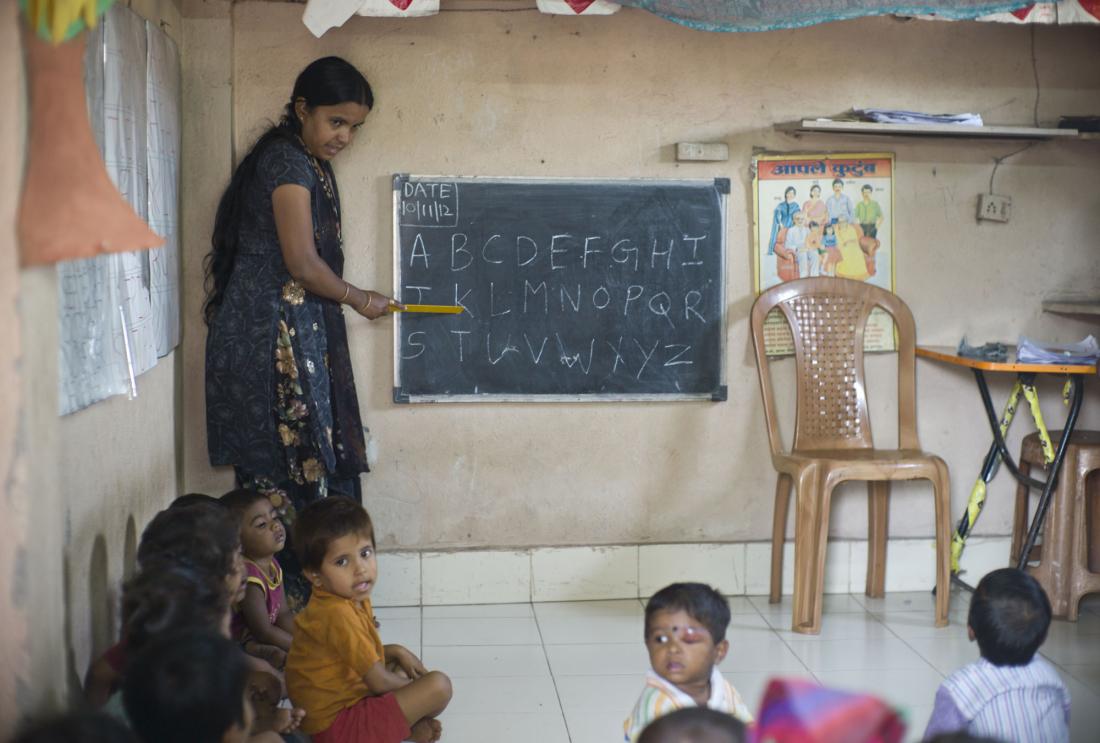Teacher and Student Motivation, Family Participation, and Student Achievement in Rural Udaipur, India
- Parents
- Students
- Teachers
- Enrollment and attendance
- Student learning
- Community monitoring
Educational outcomes in India are often very poor, especially in remote areas. The provision of education can be obstructed by high rates of teacher absenteeism: the average Indian teacher is absent nearly 24% of the time. In an ongoing evaluation, researchers are studying the relationship between teacher and student motivation, family participation, and student achievement in rural non-formal education (NFE) centers.
Policy issue
Over the past decade, many developing countries have expanded primary school access. However, these improvements in school access have not been accompanied by improvements in school quality. Many students, though enrolled, do not attend school regularly and teacher absence is often high. Students and teachers have been found to respond to financial incentives to increase attendance. But there is little evidence on how non-financial motivation and participation of the community influences educational outcomes.
Context of the evaluation
Educational outcomes in India are often very poor, especially in remote areas. A nationwide survey found that 65 percent of children enrolled in grades 2 through 5 in government primary schools could not read a simple paragraph, and 50 percent could not do simple subtraction or division.1 The provision of education, especially in rural areas, can be obstructed by high rates of teacher absenteeism: the average Indian teacher is absent nearly 24 percent of the time. This figure is often higher in more remote areas, and in 2003, research estimated that instructors in non-formal education centers in rural Udaipur, Rajasthan, were absent 44 percent of all school days.

Details of the intervention
Researchers partnered with Seva Mandir, an NGO in Udaipur, to study the motivation of instructors in rural non-formal education (NFE) centers through a randomized impact evaluation of two interventions. In the first, students were given personal diaries in which they wrote and drew for thirty minutes at the end of each school day. Every Saturday the students took the diaries home to show their parents what they were learning. The parents then checked a box to indicate that they saw the diary. The diaries serve the triple purpose of providing the parents with a greater understanding of their children's education, giving the students a fun daily ritual, and brought to their attention the number of days of school they missed.
The second intervention was a one-time collage-making event at the NFE center. At a meeting of student's parents at the NFE center, a facilitator instructed all parents to choose pictures that reminded them of education and to share them with the group. This gave parents an opportunity to share their thoughts on the importance and potential effects of education in their village with the instructor, their children, and each other.
Monthly random checks of all NFE centers provided data on teacher attendance, student attendance, and classroom activity. Payment of the nominal voluntary school fees will be used as an indicator of community commitment to education. Furthermore, student tests and endline interviews will shed light on community participation, student learning levels, and the attitudes of community and instructors towards education.
Results and policy lessons
Results forthcoming.
Duflo, Esther, Rema Hanna, and Stephen P. Ryan. 2012. "Incentives Work: Getting Teachers to Come to School." American Economic Review 102 (4): 1241–78.

